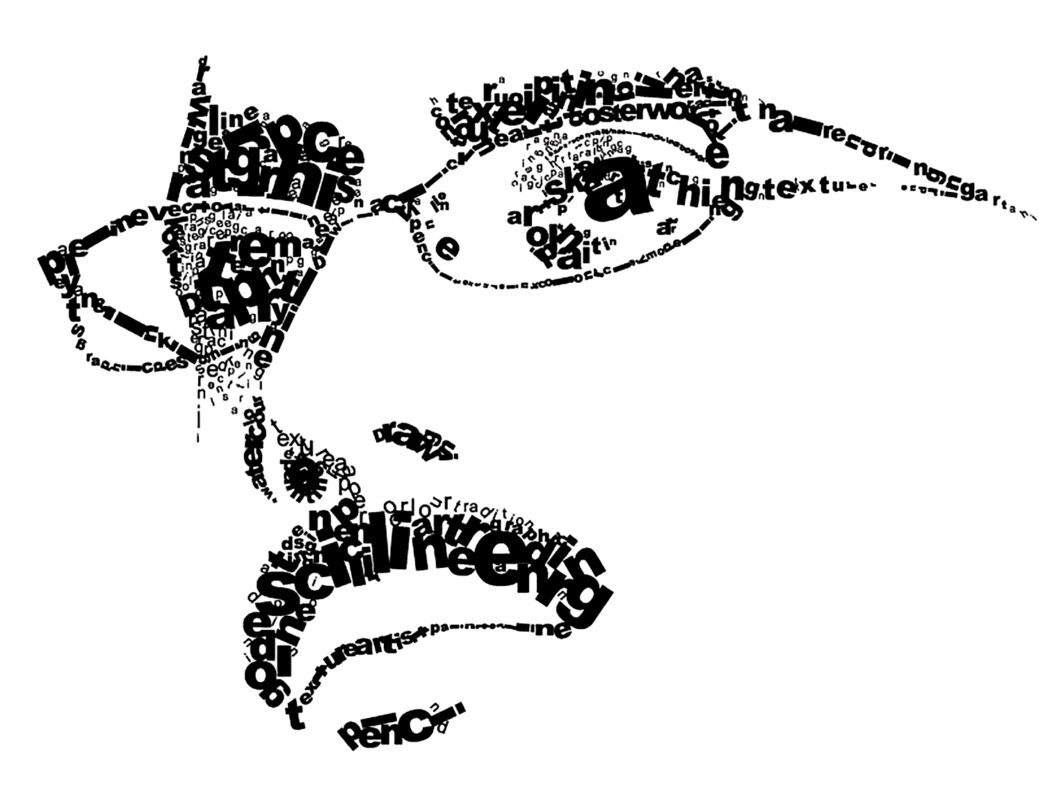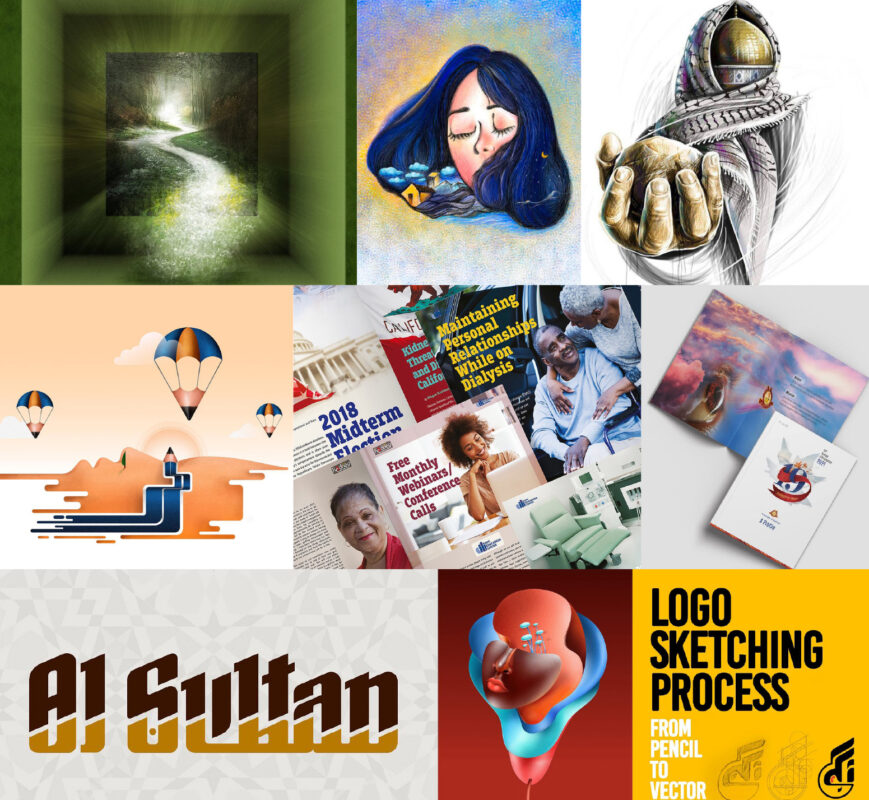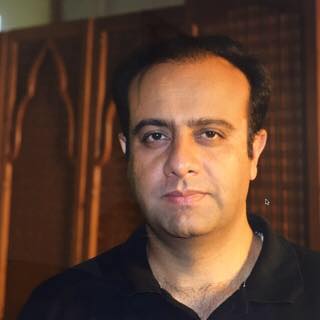As Kashmir moved from traditional calligraphy to computer-enabled graphic designing, it was Akhter Rasool who pioneered modern designing and trained a tribe in the new art styles. On his second death anniversary, Malik Kaisar remembers the change-maker

Since childhood, I have been a passionate art lover. The world of art has always held a special place in my heart, and I have been enchanted by the magic that artists create with their brushes on canvases. Even as a child, I immersed myself in art pieces, carefully observing the brush strokes and the beauty they brought to life on the canvas.
One of my warmest childhood memories is of watching signboard artists on the roadside. I would become delighted, spending hours simply watching them at work. There was something about their skill and creativity that drew me in and left me enamoured with it. At that point in my life, I aspired to become an artist.
However, as destiny would have it, circumstances changed, and I found myself on a different path. I had just completed my secondary examinations in the early 2000s, when computers had become a widespread craze, leading to a surge in interest and demand for computer education. I decided to join an institute to learn the basics of computing. It was during this time that I discovered the existence of photography and design software.
Initially, I used basic software to replicate newspaper ads and practised the same repeatedly, earning appreciation from my fellow students at the computer centre. At that time, I was not yet aware of professional software. However, one day, someone at the computer centre introduced me to Photoshop and its applications. My excitement knew no bounds as I delved into the world of digital art and photo editing. Unfortunately, at that time, my teacher had limited knowledge of this software, and there were no readily available resources or tutorials to assist me in learning this magic. But I was determined to learn and decided to take matters into my own hands.
An Inspirational Moment
I vividly remember a sunny Sunday in the summer of 2001 when I was going through the daily Greater Kashmir and was immediately captivated by its Sunday supplement’s front page. The cover featured a photo of a Hangul deer, with the heading of the cover story creatively incorporated beneath its antlers. It carried Akhter Rasool’s credit.
Akhter’s name left a lasting impression on me, and I made it a point to purchase GK every Sunday to see his latest artwork. His work inspired me greatly, and I started learning a few design software programmes by dedicating countless hours to mastering various tools. As I continued to improve my digital art skills, I also began designing advertisements for a well-known welfare organisation I was working for. Despite my growing proficiency in digital art, my admiration for Akhter Rasool’s work never waned.
Around 2005, the world of animation and graphics began to capture my imagination. As a dedicated artist, I was drawn to this medium and decided to pursue it. I embarked on a journey to Bangalore to learn animation and graphics, enrolling in a reputable 3D animation institute in India. After dedicating several years to study and practice, I returned home with ambitious plans.
However, upon my return, I encountered a challenge. People were not familiar with animation and graphics, and they labelled me as a “computer operator.” This label was frustrating, as I had invested so much time and effort into mastering this creative field. Disheartened and considering a return to Bangalore or seeking opportunities elsewhere, I stumbled upon a potential turning point.
A Chance Encounter
An acquaintance informed me of a job opening at Etalaat, a daily newspaper. Although I had not heard of the paper before, I decided to give it a try. When I entered the office for the interview, I was immediately drawn to the beautiful artwork displayed on the walls of its reception area. To my surprise, the Creative Head conducting the interview was none other than Akhter Rasool himself—the very artist whose work had inspired me for years. This was the first time I had met him in person.
As I shared details about my recent certification in animation and graphics from Bangalore, Akhter Rasool recognised my potential and offered me a position as a layout designer for the newspaper. This opportunity marked a pivotal moment in my career. Working alongside Akhter Rasool allowed me to not only enhance my skills but also gain insights into the world of layout design.
Until that point, layout designers often did not receive the recognition they deserved in the media industry. However, Akhter Rasool sought to change that. He elevated the status of graphic and layout designers, offering them competitive remuneration and emphasising their crucial role in journalism. His dedication and efforts were commendable, and he tirelessly worked to highlight the importance of design in journalism.

Mentor of Designers
The recognition and praise for Etalaat‘s layout design extended beyond its local readership. Prominent journalists from Delhi, Mumbai, and other major cities often visited the newspaper’s office and were highly impressed with the quality of its layout design. This recognition from professionals in the field was evidence of the excellence that Akhter Rasool brought to the newspaper’s design department.
In Kashmir, without a doubt, Etalaat became the first daily newspaper to prioritise layout design and excel in it. The layout department occasionally received constructive feedback and suggestions from him for improving page presentation, which was a rare occurrence in the region. This collaborative approach to design allowed the newspaper to continuously enhance its visual appeal and readability.

The impact of Etalaat‘s success in layout design was far-reaching. Other major newspapers began to take the art of layout design more seriously, realising its significance in enhancing the overall reading experience. One of Akhter Rasool’s most remarkable achievements was the transformation he brought to layout design in both English and Urdu publications. His innovative and creative approach to designing pages inspired a new generation of layout designers. Many budding designers learned the basics of this craft under his mentorship and then went on to work for other newspapers and publications. This transfer of knowledge and skills had a cascading effect on the industry, leading to a significant improvement in the quality of design in Kashmir publications.
Akhter Rasool’s hard work was a turning point in the world of layout and graphic design within the region. His dedication and commitment to excellence not only raised the bar for design in the newspaper industry but also served as an inspiration for countless individuals aspiring to make a mark in the field of graphic and layout design. The impact of his work continues to be felt, and the legacy of his contributions to the industry remains a source of pride and inspiration for designers and journalists alike.
Unfortunately, my tenure at the newspaper was short-lived. Due to circumstances, Etalaat ceased publication. However, my association with Akhter Rasool did not end there. He invited me to join him at EMMRC (Educational Multimedia Research Centre), Kashmir University, where he worked as a graphic artist. The department required motion designers, and together, we collaborated on various projects and documentary films.
I believe Akhter Rasool was one of the leading professional graphic artists in the sub-continent. His mastery of art, skills, and profession was unparalleled. Although he may have had his social shortcomings, when it came to teaching, his lessons were flawless, clear, and focused. While they could be lengthy at times, they were undeniably beneficial.
Mentor Departed
Two years ago, October 10, 2021, on a Sunday morning brought the heart-breaking news that my friend, mentor, and teacher was no longer with us. He had passed away, most probably due to a heart attack. He was in his late forties, leaving behind elderly parents, a pregnant wife, and a three-year-old son. Akhter Rasool belonged to the Jafria community, but his funeral was attended by a large number of people from various backgrounds and communities. It was a testament to the impact he had made on so many lives.

Akhter Rasool’s legacy will endure as long as graphic and layout design is used in the media and beyond. He was a professional graphic designer with a Bachelor’s degree in Fine Arts and served as a graphic artist at Kashmir University’s Educational Multimedia Research Centre. He had started his career as a freelance designer, then joined Kashmir’s leading newspaper, Greater Kashmir, for some years, and finally stepped in as the creative head of Etalaat. His contributions to the field and his dedication to nurturing emerging talent like myself will always be remembered. God had bestowed him with a soothing voice, and he recited noha on many occasions.
Last Word
My journey as an artist has been filled with twists and turns, but it was the influence of Akhter Rasool that truly shaped my path. His artistry, mentorship, and commitment to elevating the field of design were nothing short of inspirational. While he may no longer be with us in person, his legacy lives on in the art we create and the lessons he imparted. Akhter Rasool will forever remain a guiding light for artists and designers like me, reminding us of the boundless possibilities of our chosen craft.















